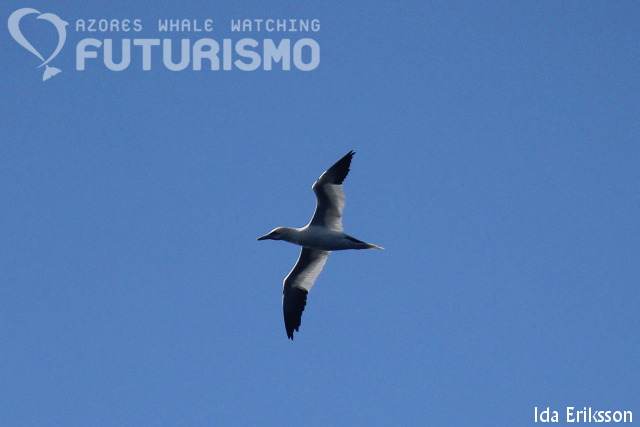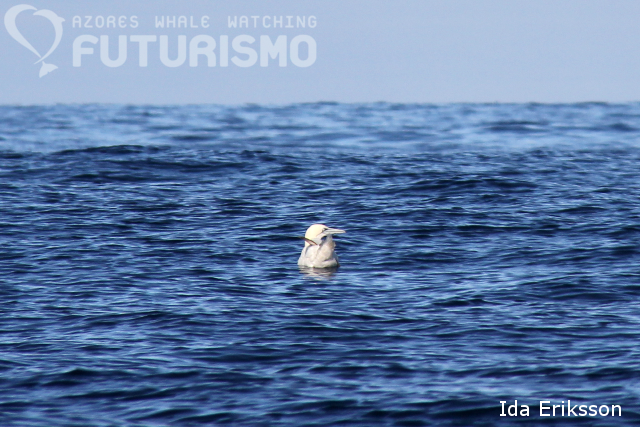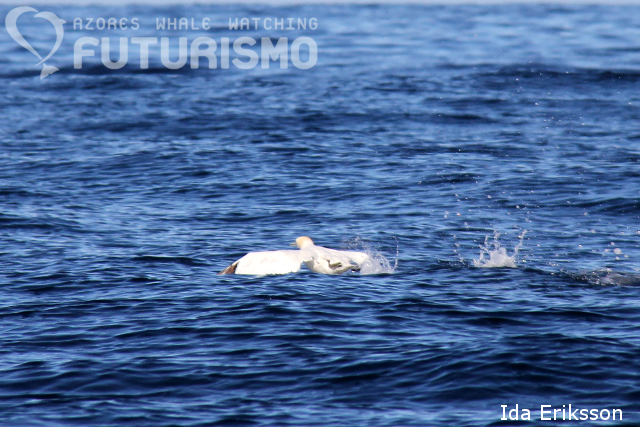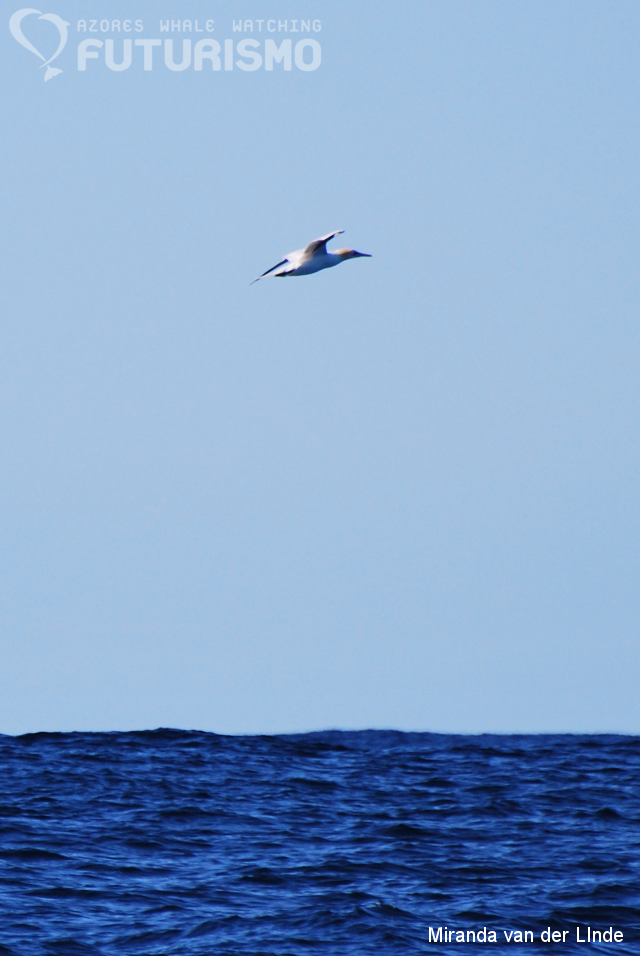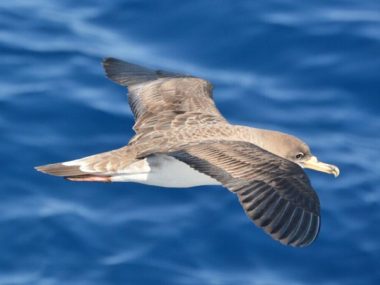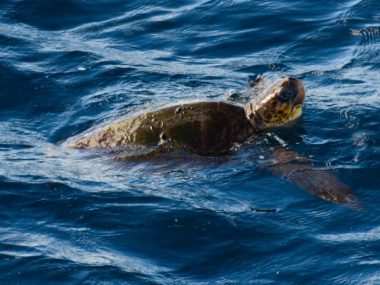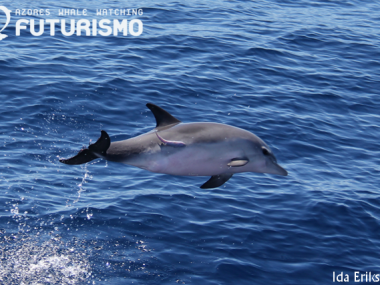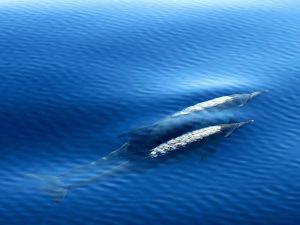Morusbassanus | Northern gannet
The northern gannet is the largest seabird which nests in Europe. They are well known for their amazing vertical dives which can bring them down to 40 meters into the water. They dive from high altitudes, folding their wings back and entering the water like a pointed arrow. This species has long narrow wings with black tips, a white body, yellow head (especially during breeding) and a long pointed blue coloured beak. The head and neck are projected forward, allowing a rapid distinction from other marine species. Gannets construct their nest with seaweed along cliffs and steep slopes. The only laying occurs between April and June and pairs are monogamous. Juveniles are dark brown in the first year and gradually become lighter in the following seasons, until reaching maturity.
In the winter they migrate south, often flying in a line of two to a few dozen individuals that form 4 to 5 lines. This species is classified as an “uncommon vagrant” in the Azores.
Length:
• Male: 93 – 110 cm
• Female: 92.5 – 104 cm
Weight:
• Male: c.2.6 kg
• Female: c.3 kg (maximum 3.6 kg)
• Fledging: c.5 kg
Wingspan: 165 – 190 cm
Population:
• Europe: c.9,000,000 – 930,000,000
• Global: c.536,000 – 1,200,000
Longevity: 21 years
Diet: Small fish
Breeding age: 3 – 5 years
Eggs: 1 (pale blue-green). Can be replaced up to 3 times
Incubation: 42 – 46 days
Nesting sites: Rocky cliffs
Fledging: c.90 days
In other languages
Portuguese: Alcatraz/Ganso patola
Spanish: Alcatraz común/Alcatraz atlántico
French: Fou de Bassan
Italian: Sula bassana
German: Basstölpel
Dutch: Jan-van-Gent
Swedish: Havssula
Norwegian: Havsule
Danish: Sule
Finnish: Suula




